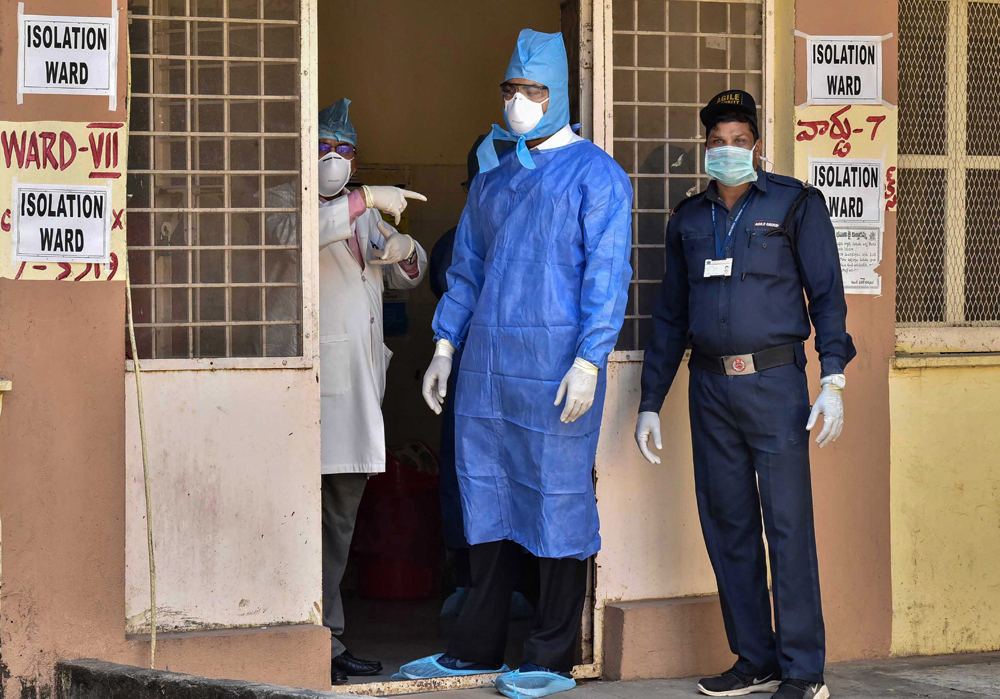A panel of critical care specialists is set to release guidelines for doctors across the country to manage any unprecedented surge in the demand for intensive care unit beds from anticipated growing numbers of patients infected by the novel coronavirus.
The Indian Society for Critical Care Medicine (ISCCM) plans to circulate the guidelines — sets of dos and donts —primarily for use by frontline doctors and medical workers if coronavirus patients begin to overwhelm India’s ICU facilities that often suffer from staff shortages.
“We have to do this now to prepare ourselves for could be a surge in the numbers of critically ill patients,” Dhruva Chaudhry, professor of critical care medicine at the Post-Graduate Institute of Medical Sciences, Rohtak (Haryana), and the president of the ISCCM, told The Telegraph.
The guidelines under preparation by a 13-member ISCCM task force will cover triage and allocation of resources, admission and discharge criteria, simultaneous management of multiple patients, ventilation strategies, and plans to deal with a surge in patient numbers.
Health authorities had until Monday afternoon documented 114 coronavirus patients in the country, including 13 who have recovered and been discharged and two who died. But experts believe India’s numbers are likely to burgeon in the coming days or weeks if local transmission of the virus progresses to community transmission.
Global patterns of the coronavirus disease (Covid-19) suggest that around 81 per cent of those infected will have only mild symptoms, 15 per cent would have severe symptoms requiring medical consultation and possible hospitalisation and about 5 per cent would require critical care, including ventilator support.
The World Health Organisation in a situation report on March 6 had said available data indicate that the crude mortality rate — the number of reported deaths divided by the reported cases — is between 3 and 4 per cent, significantly higher than the seasonal influenza mortality of below 0.1 per cent.
But clinical virologists caution that outcomes of illness often hinge on resources including the quality of critical care.
“The virus has a kill rate, but we determine what proportion of patients we can save through the quality of healthcare available to patients,” T. Jacob John, emeritus professor at the Christian Medical College, Vellore, told this newspaper.
Members of the ISCCM task force estimate that at any point around 5 per cent of ICU beds in government hospitals and about 10 to 15 per cent ICU beds in private hospitals will be available to manage a surge in demand.
The ISCCM guidelines, one task force member said, will take into account guidelines already available from the WHO and the health ministry for treating Covid-19 and patterns of illness and management from other countries.
“We plan to circulate the guidelines to all 12,000 members of the ISCCM who are critical care specialists in government and private hospitals across the country,” Chaudhry said.
Public health experts have warned that India’s current testing criteria — only persons with symptoms and a foreign travel history of their contacts — is too limited to rule out community transmission.
Although the Indian Council of Medical Research has announced plans for random screening of patients with severe respiratory illness, experts say it could take weeks before the results are out.
“In the absence of such (random) testing, clusters of the disease can develop and reach dangerous levels before they are noticed,” the Jan Swasthya Abhiyan and the All India People’s Science Network, two non-government health groups said in a statement on Monday.











